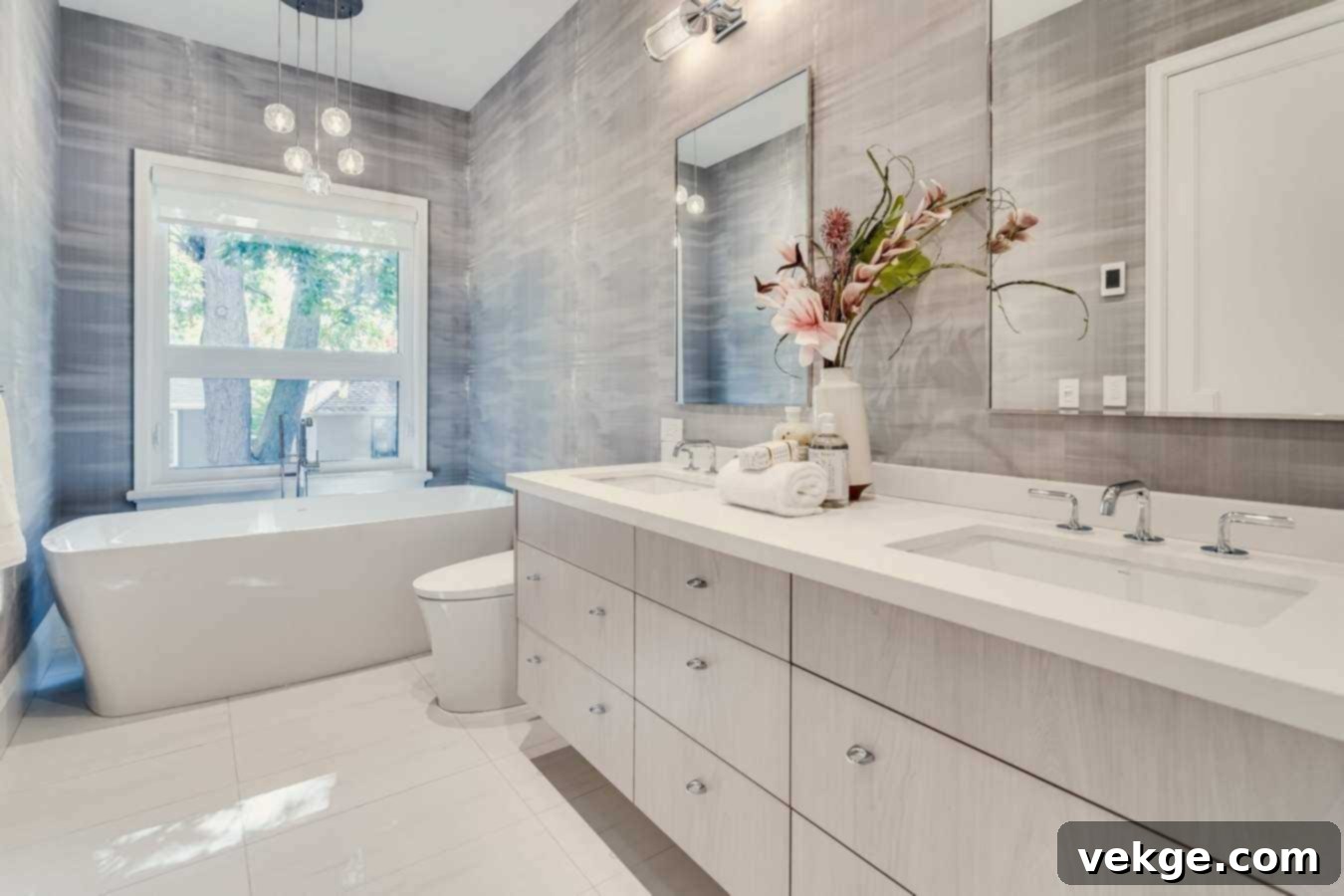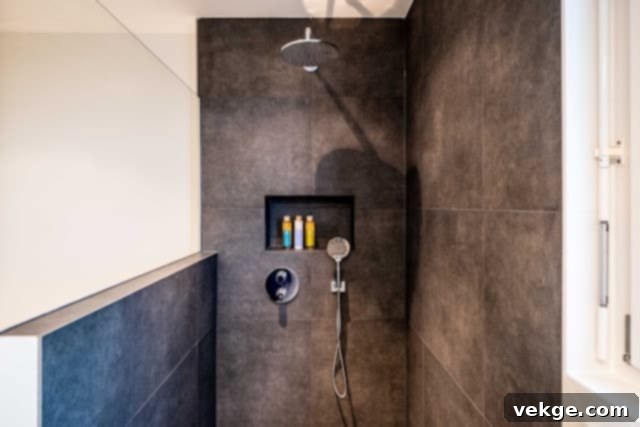Ultimate Guide to Bathroom Renovations: Top Tips for a Stunning & Functional Space
Embarking on a bathroom renovation journey is an exciting prospect, promising a refreshed space that reflects your style and meets your functional needs. Whether you’re planning a minor refresh of a powder room or a complete transformation of a master ensuite, navigating the process effectively requires careful consideration and strategic planning. A successful renovation not only enhances your home’s aesthetic appeal but also its value and your daily comfort. To help ensure a smooth process and a truly stunning result, we’ve compiled a comprehensive guide featuring the top tips for any bathroom renovation project. Let’s dive into these essential considerations to help you create the bathroom of your dreams.
1. Set a Clear and Realistic Budget
The foundation of any successful renovation project begins with a well-defined and realistic budget. This isn’t merely a number; it’s a critical roadmap that will guide every decision, from the scope of your renovation to the selection of materials and the professionals you hire. Without a clear financial framework, it’s remarkably easy to fall prey to the allure of high-end fixtures and finishes, potentially leading to overspending and project delays.
Begin by determining the maximum amount you are comfortable spending. Then, meticulously break down these funds into key categories: labor costs (plumbing, electrical, tiling, general contracting), material costs (fixtures, flooring, tiles, cabinetry, countertops), and contingency. A contingency fund is paramount—allocate approximately 10-15% of your total budget for unforeseen expenses. These could include unexpected structural issues, hidden water damage, or even a last-minute design change. Having this buffer prevents you from running out of funds mid-project, which can be a significant source of stress. Research average costs in your area for similar renovations to set informed expectations and prioritize your spending where it matters most to you, ensuring your desires align with your financial reality.
2. Plan the Layout Carefully for Optimal Functionality

A well-thought-out layout is the cornerstone of an efficient and enjoyable bathroom. Regardless of your bathroom’s size – be it a compact powder room or a sprawling master bath – optimizing space and usability should be your top priority. Start by meticulously considering the placement of essential fixtures: the toilet, sink(s), shower, and bathtub. Ensure there’s ample room for comfortable movement, preventing a cramped or awkward feel.
Common layout pitfalls include placing the toilet directly in line with the door, obstructing entryways, or having insufficient clearance around the sink or shower. Think about the “workflow” of your bathroom: how do you typically use the space? Is there a clear path from the door to the vanity, and then to the shower or toilet? For smaller bathrooms, consider space-saving solutions like corner sinks, wall-mounted toilets, or pocket doors. If your existing layout feels restrictive or dysfunctional, don’t hesitate to consult a professional interior designer or architect. Their expertise can unlock innovative solutions, helping you maximize every inch and create a layout that feels both expansive and highly functional, potentially even incorporating universal design principles for long-term accessibility.
3. Prioritize Robust Ventilation to Combat Moisture
Given their inherent exposure to water and humidity, bathrooms are natural breeding grounds for moisture-related problems. Without proper ventilation, issues like mold, mildew, peeling paint, and even structural damage can quickly develop, compromising both the aesthetics and health of your home. Therefore, establishing excellent ventilation is absolutely critical for maintaining a healthy, fresh, and durable bathroom environment.
Your ventilation strategy might involve a combination of natural and mechanical solutions. Windows offer natural airflow, but for consistent and effective moisture removal, an exhaust fan is indispensable. When selecting an exhaust fan, pay close attention to its CFM (Cubic Feet per Minute) rating, ensuring it’s powerful enough to adequately ventilate your bathroom’s size. A general rule of thumb is 1 CFM per square foot of bathroom area, with a minimum of 50 CFM for smaller bathrooms. Many modern exhaust fans come equipped with advanced features such as humidity sensors, which automatically activate when moisture levels rise, and timers, allowing the fan to run for a set period after you’ve left the bathroom. Properly ducting the fan to vent outside (rather than into an attic) is also crucial for preventing moisture from accumulating elsewhere in your home. Investing in a high-quality, properly installed ventilation system protects your renovation investment and promotes a healthier living space.
4. Choose Durable and Water-Resistant Materials
Bathrooms are high-traffic zones that endure constant exposure to moisture, temperature fluctuations, and daily wear and tear. Consequently, the selection of materials is paramount; opting for durable, water-resistant, and easy-to-maintain surfaces will ensure your renovation stands the test of time. Skimping on material quality can lead to costly repairs and premature deterioration.
For flooring, top choices include porcelain or ceramic tile, which are not only highly water-resistant and durable but also available in an immense array of styles and colors. Luxury vinyl tile (LVT) or plank (LVP) also offers excellent water resistance and can mimic the look of wood or stone with greater comfort underfoot. For walls, consider moisture-resistant drywall (also known as “greenboard”) or, ideally, cement board in shower and tub areas, providing a robust substrate for tile. When it comes to countertops, materials like quartz, granite, or solid surface are excellent for their non-porous nature and resistance to stains and scratches.
Beyond the primary surfaces, the importance of protective materials such as sealants cannot be overstated. High-quality sealants are essential for creating watertight barriers around sinks, tubs, showers, and other joints, preventing water from penetrating into sub-surfaces where it can cause significant damage. Products like Sabre sealants from NZ are designed for both interior and exterior applications, offering robust durability against UV light, chemicals, and weathering. Utilizing such advanced sealants and bonding materials provides an extra layer of protection, crucial for areas continually exposed to humidity and moisture. Proper sealing ensures the longevity of your chosen materials and safeguards your renovation investment, keeping your bathroom pristine and protected for years to come.
5. Master the Art of Bathroom Lighting
Lighting is far more than just illumination; it’s a powerful design element that shapes the mood, enhances functionality, and even impacts safety in your bathroom. A well-designed lighting scheme can make a small bathroom feel larger, highlight architectural features, and provide practical task lighting where it’s needed most. The key to effective bathroom lighting is layering – combining different types of light to achieve a balanced and versatile space.
Begin with ambient lighting, typically provided by overhead fixtures like recessed lights or a stylish central ceiling light, to illuminate the entire room evenly. This provides general brightness. Next, incorporate task lighting, which is crucial for activities like grooming, shaving, or applying makeup. Vanity lights, such as sconces mounted on either side of the mirror or a fixture above, are ideal, as they illuminate the face without casting harsh shadows. Finally, consider accent lighting to add depth and visual interest. This could include dimmable LED strips under floating vanities, within recessed niches, or small spotlights highlighting artwork. Dimmers are a fantastic addition, allowing you to adjust the light intensity to create a bright, functional space during the day and a relaxing, spa-like ambiance in the evening. Don’t forget to maximize natural light where possible with appropriately chosen window treatments that balance privacy with brightness.
6. Maximize Storage with Smart Solutions
Regardless of its size, a common challenge in every bathroom is adequate storage. From toiletries and cleaning supplies to fresh towels and personal care items, there’s always a need for clever solutions to keep everything organized and out of sight, maintaining a clean and uncluttered aesthetic. Effective storage planning prevents countertop clutter and makes daily routines smoother.
Think creatively about how to integrate storage into your design. Built-in shelves, recessed niches within shower walls, and custom cabinetry that fits the space perfectly are excellent options. Over-the-toilet cabinets or shelving units can utilize often-wasted vertical space, especially in smaller bathrooms. Consider a vanity with drawers and internal organizers, which can keep small items like toothbrushes, makeup, and hair accessories neatly sorted. Medicine cabinets with mirrored doors offer discreet storage for daily essentials, and some even include electrical outlets inside for charging devices. If space allows, a linen closet or a tall, narrow storage tower can provide much-needed room for towels and bulkier items. Don’t overlook the potential of hooks on the back of the door or stylish wall-mounted shelves for decorative items or frequently used hand towels. Thoughtful storage ensures every item has a designated home, contributing to a serene and highly functional bathroom.
7. Embrace Water Efficiency for Savings and Sustainability
In today’s world, water efficiency is not just an environmental imperative; it’s also a smart financial decision that can lead to significant savings on your utility bills over time. When undertaking a bathroom renovation, it presents a prime opportunity to integrate water-saving technologies without sacrificing performance or aesthetics. Making eco-conscious choices contributes to a sustainable home and a healthier planet.
Focus on installing water-efficient fixtures, which are designed to use less water while still providing excellent functionality. Look for low-flow toilets, which typically use 1.28 gallons per flush (GPF) or less, compared to older models that might use 3.5 GPF or more. Dual-flush toilets offer even more flexibility, allowing you to choose between a lower volume flush for liquid waste and a higher volume for solid waste. Similarly, swap out old faucets and showerheads for low-flow alternatives. Many modern showerheads offer innovative technologies that deliver a powerful, satisfying spray using less water. Always look for products that bear the WaterSense label, an EPA certification indicating that they meet strict criteria for water efficiency and performance. Beyond fixtures, consider your habits: turning off the tap while brushing your teeth, taking shorter showers, and fixing leaks promptly all contribute to a truly water-efficient bathroom. These small changes, combined with smart fixture choices, create a significant positive impact.
8. Hire the Right Professionals for Peace of Mind

While the DIY spirit is admirable, a bathroom renovation is a complex undertaking that often involves specialized skills across multiple trades. From intricate plumbing and electrical work to precise tiling and waterproofing, these tasks require expertise that goes beyond basic home improvement knowledge. Attempting to tackle highly technical aspects yourself without the proper skills can lead to costly mistakes, safety hazards, and ultimately, a subpar finish. Knowing when to call in the professionals is a mark of a truly smart homeowner.
Thoroughly researching and hiring licensed and insured contractors is crucial. Start by gathering recommendations from friends, family, or reputable online platforms. Look for professionals with a strong track record and excellent references. When interviewing potential contractors, don’t shy away from asking detailed questions: inquire about their experience with similar projects, request to see a portfolio of their previous work, and speak with past clients. Ensure they provide a comprehensive, written contract outlining the scope of work, timeline, payment schedule, and warranty information. A good contractor will manage the various trades – plumbers, electricians, tilers – ensuring the project stays on track and meets all building codes. Investing in the right team not only guarantees a professional finish but also provides invaluable peace of mind, transforming what could be a stressful ordeal into a smooth and enjoyable renovation experience.
9. Consider a Portable Shower Unit During Renovations
Undergoing a bathroom renovation can be highly disruptive to your daily routine, particularly if your home has only one bathroom. The thought of being without a functional shower for days or even weeks can be a significant source of anxiety and inconvenience. Fortunately, there’s a practical and increasingly popular solution to mitigate this disruption: renting a portable shower unit.
Portable shower units are self-contained, temporary shower facilities that can be set up in a convenient location outside your main living area, such as your garage, backyard, or even a utility room. These units typically come equipped with essential features, including hot water capability, privacy curtains or walls, and sometimes even changing areas. They are easy to rent from specialized companies and are available in various sizes to suit different needs and spaces. This small, often overlooked investment can significantly enhance your comfort and maintain a sense of normalcy during the renovation period, allowing you to stick to your daily hygiene routine without stress. By providing a dedicated space for showering, a portable unit helps keep your home cleaner and prevents the need to find alternative arrangements, making your bathroom renovation a much more manageable and less stressful endeavor for everyone in the household.
